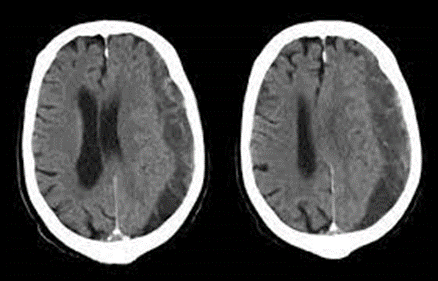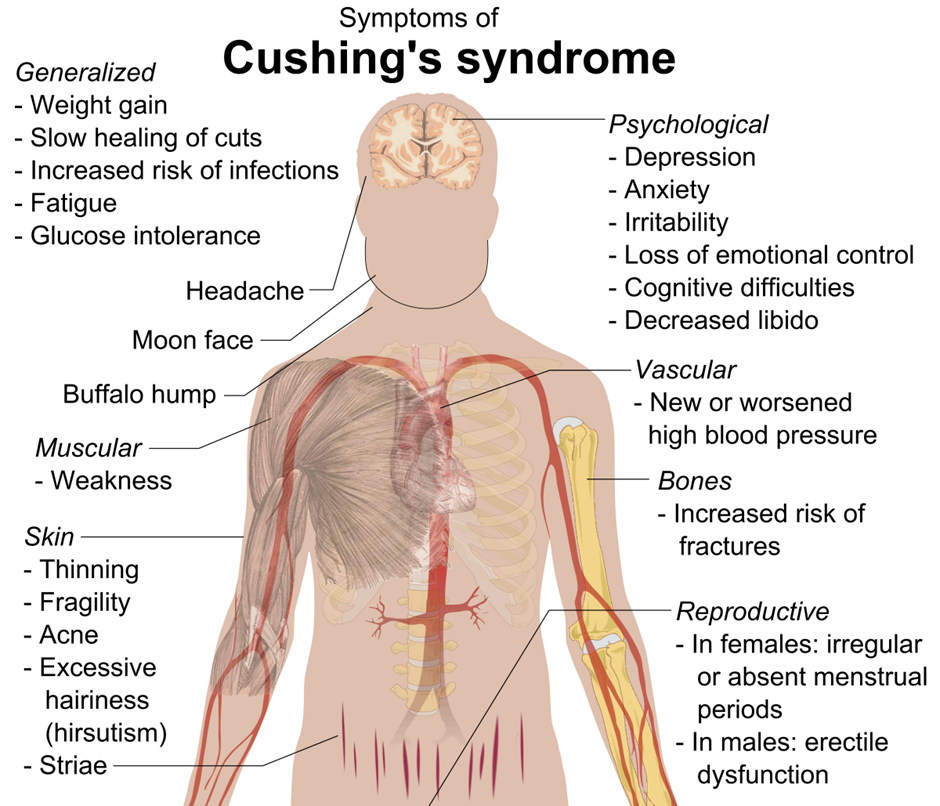A nurse is collecting data from a client who has a subdural hematoma following a motor-vehicle crash. For which of the following findings should the nurse identify that the client is experiencing an increase in intracranial pressure?
The client has a delayed response to verbal commands.
The client has ecchymosis around the eyes.
The client is unable to remember details of the motor-vehicle crash.
The client reports ringing in the ears.
The Correct Answer is A
Choice A Reason:
The client has a delayed response to verbal commands. This finding can indicate increased intracranial pressure. Changes in responsiveness, such as delayed responses to verbal commands or other stimuli, can be indicative of neurological impairment due to elevated pressure within the skull.
Choice B Reason:
The client has ecchymosis around the eyes. Ecchymosis around the eyes (raccoon eyes) can occur with certain head injuries, but it's not a direct sign of increased intracranial pressure. It's more commonly associated with basilar skull fractures rather than specifically reflecting increased pressure within the skull.
Choice C Reason:
The client is unable to remember details of the motor-vehicle crash. Memory impairment or amnesia regarding the event can occur due to head trauma, but it might not directly correlate with an increase in intracranial pressure. It's more related to the effects of the injury on memory function.
Choice D Reason:
The client reports ringing in the ears. Tinnitus or ringing in the ears might occur in some cases of head trauma but is not a direct indicator of increased intracranial pressure. It might result from the impact of the injury or other associated factors.

Nursing Test Bank
Naxlex Comprehensive Predictor Exams
Related Questions
Correct Answer is D
Explanation
Choice A Reason:
Using a fire extinguisher at the source of the smoke is not appropriate. While using a fire extinguisher could potentially help contain a small fire, it's crucial to prioritize rescuing those in immediate danger and alerting others about the fire first by activating the fire alarm. This action ensures that help is on the way and that everyone is aware of the emergency.
Choice B Reason:
Closing the doors to the room and to the bathroom is not appropriate. Closing doors can help contain smoke and fire to some extent, but again, the priority in an emergency situation like this is to rescue those in immediate danger then activate the fire alarm to ensure a swift response and alert others.
Choice C Reason:
Activate the fire alarm system is appropriate. Activating the fire alarm alerts others in the facility and initiates the emergency response protocol, helping to ensure that help is on the way while potentially preventing the spread of fire. However, this step should be taken after assisting the client to safety as they are in immediate danger.
Choice D Reason:
Assisting the client who is in immediate danger to a nearby common area should be the furst step that the nurse takes before alerting other people of the fire. (RACE protocol)
Correct Answer is D
Explanation
Choice A Reason:
Jaundice, characterized by yellowing of the skin and eyes, is typically associated with liver dysfunction or conditions affecting the breakdown of red blood cells, not directly linked to Cushing's syndrome. While some liver abnormalities can be seen in Cushing's syndrome due to metabolic changes, jaundice is not a typical manifestation of this condition.
Choice B Reason:
Muscle rigidity is more commonly associated with conditions like Parkinson's disease, dystonia, or certain muscle disorders. In Cushing's syndrome, muscle weakness due to protein breakdown and muscle wasting is a more expected finding rather than muscle rigidity.
Choice C Reason:
Weight loss is incorrect. Weight gain, particularly in the central part of the body (trunk) and face (creating a "moon face"), is a more common characteristic of Cushing's syndrome. The excess cortisol often leads to increased fat deposits, especially in these areas, rather than weight loss.
Cushing's syndrome is characterized by an excess of cortisol in the body, either due to the body producing too much cortisol or from long-term use of corticosteroid medications. Considering this condition, the nurse should expect the following finding:
Choice D Reason:
Easily bruised is correct. Excess cortisol can lead to the thinning of the skin and weakening of blood vessels, making individuals with Cushing's syndrome prone to easy bruising. Other common findings associated with Cushing's syndrome include weight gain (especially in the trunk and face), muscle weakness, high blood pressure, fatigue, and changes in skin such as thinning and purple stretch marks.

Whether you are a student looking to ace your exams or a practicing nurse seeking to enhance your expertise , our nursing education contents will empower you with the confidence and competence to make a difference in the lives of patients and become a respected leader in the healthcare field.
Visit Naxlex, invest in your future and unlock endless possibilities with our unparalleled nursing education contents today
Report Wrong Answer on the Current Question
Do you disagree with the answer? If yes, what is your expected answer? Explain.
Kindly be descriptive with the issue you are facing.
